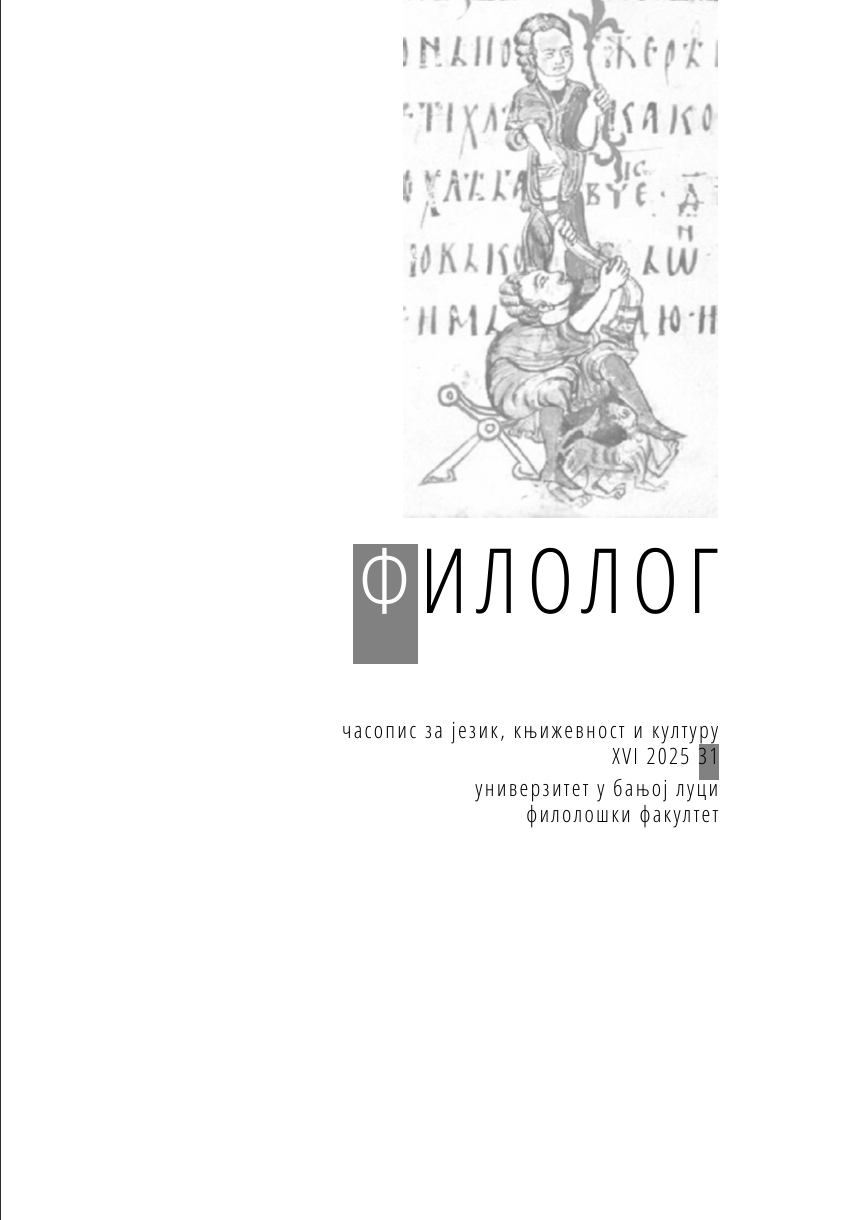CONCEALING AND REVEALING: REPRESSION IN A PALE VIEW OF HILLS AND THE REMAINS OF THE DAY
DOI :
https://doi.org/10.21618/fil2531479zMots-clés :
repression, trauma, A Pale View of Hills, The Remains of the Day, selective memories, defence mechanism, societal and national construct, guilt, painRésumé
recurring theme in many of Kazuo Ishiguro’s novels is that of repression. This article examines A Pale View of Hills (1982) and The Remains of the Day (1989), analysing repression through the lens of psychoanalytic literary theory— particularly Freud’s concept of repression as a defence mechanism—as well as trauma theory and the narratological frameworks of narrative identity. In addition, it draws on sociocultural and gender theory to argue that repression functions not only on an individual level but also as a broader societal and national construct. Through close textual analysis, the article contends that Ishiguro’s characters repress not only emotions but also aspects of their personal and cultural histories in an effort to preserve a fragile sense of dignity and self-coherence.
Références
Beedham, M. (2010) The Novels of Kazuo Ishiguro. London, Palgrave Macmillan.
Butler, J. (1988) Performative Acts and Gender Constitution: An Essay in Phenomenology and Feminist Theory. Theatre Journal, 40(4), 519–531. https://doi.org/10.2307/3207893
Butler, J. (1990) Gender trouble: Feminism and the Subversion of Identity. New York, Routledge.
Caruth, C. (Ed.) (1995) Trauma: Explorations in Memory. Johns Hopkins University Press.
Drąg, W. (2014) Revisiting Loss: Memory, Trauma and Nostalgia in the Novels of Kazuo Ishiguro. Newcastle, Cambridge Scholars Press.
Foucault, M. (1977) Discipline and Punish: The Birth of the Prison (A. Sheridan, Trans.). New York, Pantheon Books.
Foucault, M. (1978) The History of Sexuality, Volume 1: An introduction (R. Hurley, Trans.). New York, Pantheon Books.
Freeman, J. (2005/2008) Never Let Me Go: A Profile of Kazuo Ishiguro. In: Conversations with Kazuo Ishiguro. Shaffer, Brian W. and Cynthia F. Wong (eds.) Jackson, University Press of Mississippi.
Freud, S. (1925) Collected Papers: Volume IV. Papers on Mtapsychology; Papers on Applied Psycho-Analysis ( J. Riviere, Trans.). London, Leonard & Virginia Woolf at the Hogarth Press and the Institute of Psycho-Analysis.
Freud, S. (1960) The Ego and the Id ( J. Strachey, Trans.). In: J. Strachey (ed. & trans.) The Standard Edition of the Complete Psychological Works of Sigmund Freud (Vol. 19, pp. 12–66). London, Hogarth Press.
Head, D. (2002) The Cambridge Introduction to Modern British Fiction, 1950—2000. New York, Cambridge University Press. pp. 156–187.
Ishiguro, K. (1982) A Pale View of Hills. London, Faber and Faber.
Ishiguro, K. (1993) The Remains of the Day. New York, Vintage International Edition.
Lewis, B. (2000) Kazuo Ishiguro. Manchester, Manchester University Press.
Mason, G. (1989) An Interview with Kazuo Ishiguro. Contemporary Literature, Vol. 30, No. 3 (Autumn, 1989), University of Wisconsin Press, 335–347.
Matek, Lj. (2018) Narrating Migration and Trauma in Kazuo Ishiguro’s A Pale View of Hills, American, British and Canadian Studies, Volume 31, December 2018. DOI: 10.2478/abcsj-2018-0020.
Parkes, A. (2001) Kazuo Ishiguro’s The Remains of the Day: A Reader’s Guide. London, Continuum.
Ricoeur, P. (1992) Oneself as Another (K. Blamey, trans.) Chicago and London, University of Chicago Press.
Shaffer, B. (1998) Understanding Kazuo Ishiguro. Columbia, University of South Carolina Press.
Sim, W. (2010) Kazuo Ishiguro. London, Routledge.
Sloane, P. (2021) Kazuo Ishiguro’s Gestural Poetics. London, Bloomsbury.
Suter, R. (2020) Two-World Literature: Kazuo Ishiguro’s Early Novels. Honolulu, University of Hawai‘i Press.
Swift. Graham (1989/2008) Shorts: Kazuo Ishiguro. In Conversations with Kazuo Ishiguro. Shaffer, Brian W. and Cynthia F. Wong (eds.) Jackson, University Press of Mississippi.
Szederkényi, Éva K. (2014) Gaps and Silences in Re-interpreting the Past: The Development of Kazuo Ishiguro’s Narrative Technique in His Early Novels. PhD Dissertation, Faculty of Humanities and Social Sciences, Pázmány Péter Catholic University, Doctoral School of Literary Studies, Budapest. DOI: 10.15774/PPKE.BTK.2015.007.
Teo, Y. (2014) Kazuo Ishiguro and Memory. London, Palgrave.
Walkowitz, R. L. (2007) Unimaginable Largeness: Kazuo Ishiguro, Translation, and the New World Literature, A Forum on Fiction, Vol. 40, No. 3, Ishiguro's Unknown Communities (Summer, 2007), 216–239. https://www.jstor.org/stable/40267701.
Wall, K. (1994) The Remains of the Day and Its Challenges to Theories of Unreliable Narration. The Journal of Narrative Technique, Vol. 24, No. 1 (Winter, 1994), 18–42.
Wong, C. F. (2019) Kazuo Ishiguro. 3rd ed. Tavistock, Northcote House.
Yoneyama, L. (1999) Hiroshima Traces: Time, Space, and the Dialectics of Memory. University of California Press.
Téléchargements
Publiée
Comment citer
Numéro
Rubrique
Licence

Ce travail est disponible sous licence Creative Commons Attribution - Pas d'Utilisation Commerciale - Pas de Modification 4.0 International.








